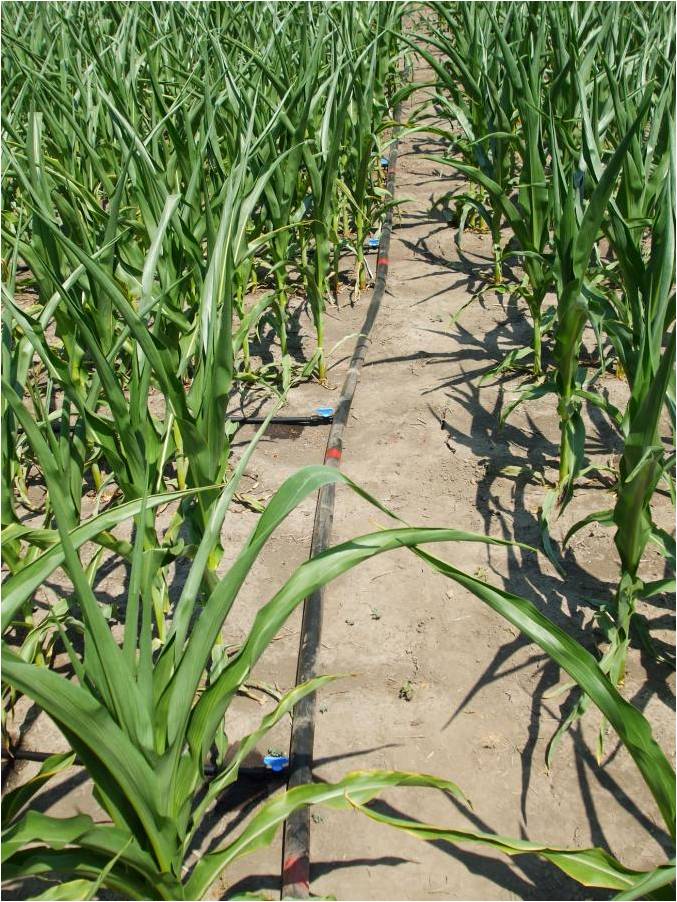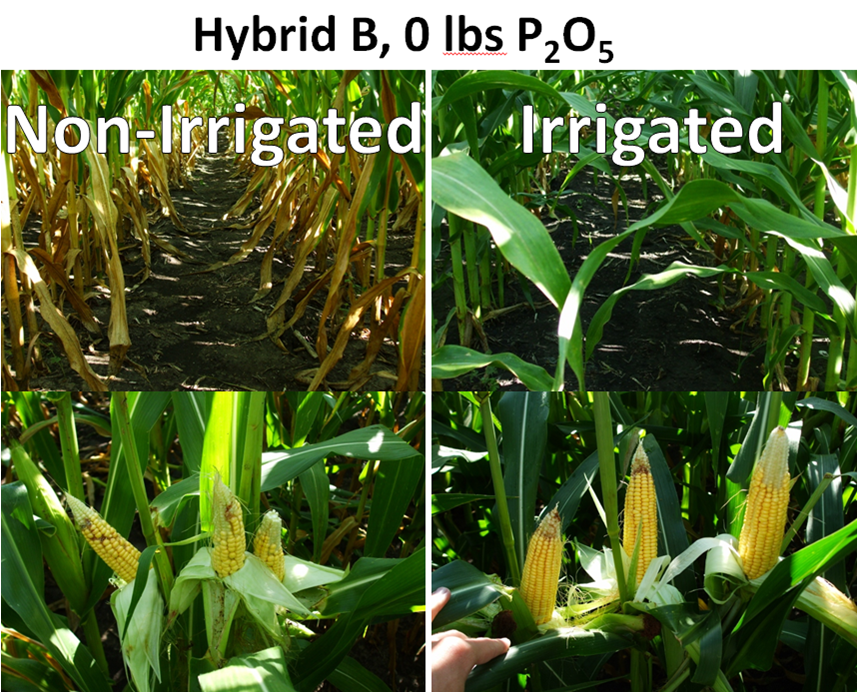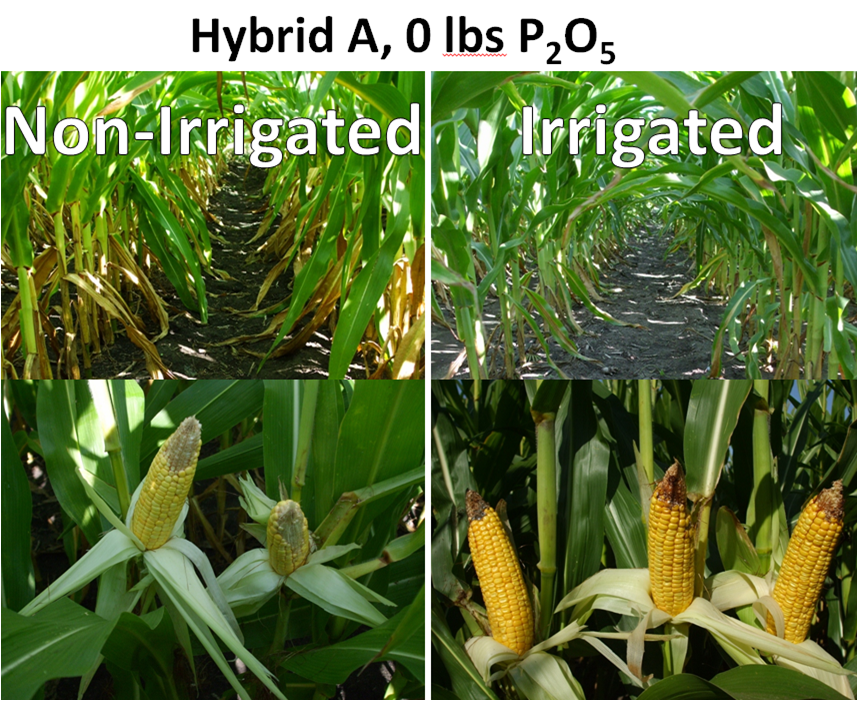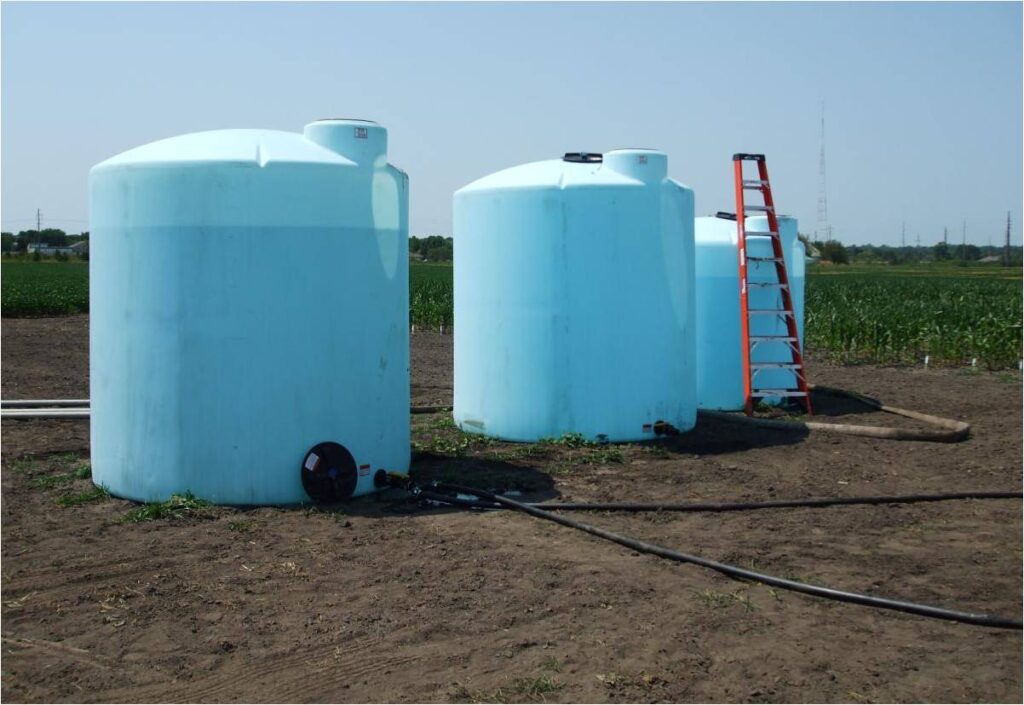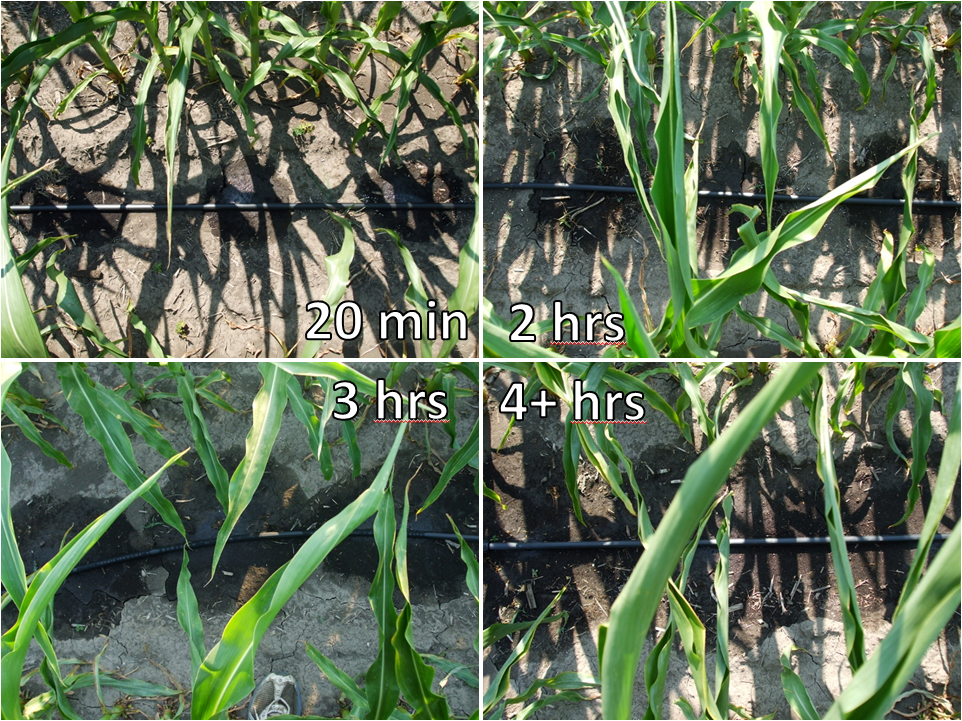Drip irrigation and fertigation
Understanding synergies between irrigation and other crop management practices in high yield corn production
Update: Read the results from the 2015 subsurface fertigation experiment published in the Fluid Journal Winter 2017 issue, or as a .pdf.
Corn and soybean grain yields are achieved through complex interactions of agronomic management practices, variety/hybrid yield potential, and weather as illustrated in The Seven Wonders of the Corn Yield World and The Six Secrets of Soybean Success. Weather, particularly the availability of water, limits yield potential and also influences the potential yield response to other agronomic inputs like plant population and fertility. Below-average levels of precipitation in central Illinois during the past three growing seasons have many producers concerned not only about the possibility of extreme weather variability in the future, but also interested in how to minimize their risk through irrigation. Although irrigation is not widely distributed in Illinois as of present, advances in more efficient systems such as surface or sub-surface drip irrigation could make irrigation more feasible and provide opportunities to precisely supply nutrients to the root zone (fertigation).
Among the most limiting of factors in our quest for greater yields is the ability to supply adequate moisture to the crop. While estimates vary considerably, at least 3,000 gallons of water are required to produce one bushel of corn, and as much as 10,000 gallons to produce one bushel of soybeans! In other words, each additional acre-inch of water results in an approximate yield gain of 10 bushels/acre for corn and 3 bushels/acre for soybeans. Every little bit of water can have a significant effect on final grain yield (Figure 1)!
An additional advantage with certain types of irrigation is the practice of fertigation, or the application of mineral nutrients through an irrigation system (Figure 2). This practice could be especially useful for nutrients that are required in high quantities after tassel/silk emergence (VT/R1), but are not easily applied with most ground equipment at this stage of plant development. In the case of nitrogen (N) and phosphorus (P), as much as 50 lb/acre of N and 55 lb/acre of P2O5 are accumulated after VT/R1. This post-flowering requirement could be met entirely or partially through the use of drip fertigation.
In 2012, we initiated three experiments to quantify the potential yield increase associated with surface drip irrigation, P fertigation, and N fertigation in corn management systems designed for high yield. An additional objective of this research was to better understand the potential synergies between irrigation and other management inputs like placed P fertility, increased plant population, and fungicide application. This work was supported by Netafim USA.
Experiment 1. How do irrigation and improved phosphorus management impact the potential yield response of soils already testing high in phosphorus?
Common Illinois agronomic practices in a corn-soybean rotation include P fertilization for both crops during the corn production year. While Illinois farmers fertilize, on average, 93 lbs P2O5 for corn production (NASS, 2011), only 20% of acres receive P fertilizer specifically for the soybean production. The 80% of soybean fields receiving no direct applied P would have approximately 13 lbs P2O5 remaining from the previous year’s corn crop (NASS, 2010). Continued increases in grain production with limited P fertilization suggest a looming soil fertility crisis if adequate adjustments are not made in usage rates. This inadequate management of P may be due in part to soil test calibrations which suggest no P fertilization in soils testing ‘high’ or ‘very high’. Optimizing P fertilizer rate and placement with supplemental, in-season fertigation may improve nutrient availability and increase yields when soil tests would normally suggest otherwise (Figure 3).
Experiment 2. Is availability of phosphorus most important during vegetative (V10-V14) or reproductive (R2-R6) growth?
Grain yield is a combination of kernel number and kernel weight. Seasonal P uptake peaks during critical growth periods for the determination of row number (V5-V7) and potential ovules per row (V10-V12). Additionally, P demands remain elevated during reproductive stages (R2-R6) as final kernel weight is determined. In-season P fertigation applications (Figure 4) were timed to coincide with these growth stages by supplying 60 lbs P2O5/acre during either vegetative growth, reproductive growth, or both. In addition to yield, kernel number, and kernel weight, other ear components (row number and length) and grain quality characteristics (protein, oil, and starch concentration) will be measured.
Experiment 3. How does irrigation influence the yield response to agronomic management factors in an omission plot trial?
In a high tech management approach (improved P fertility, weather protected N, biotech insect protection, increased plant population, and a fungicide), overhead irrigation increased yields by 22 bushels/acre in 2011 at our site in Champaign, IL. The value of subsurface banded P (100 lb P2O5/acre) and an extra 60 lb N/acre were especially enhanced with the presence of irrigation. Irrigation did not increase yield under the traditional farmer management practice which contained no extra inputs.
We speculate that fertigation approaches which can provide adequate N during the key periods of crop growth and development may further improve nitrogen uptake, utilization, and yield in an intensively managed system. An experiment in 2012 was designed to evaluate this hypothesis by supplying 120 lb N/acre in a drip irrigation system (Figure 5).
With the need to achieve higher corn and soybean productivity, supplementing rainfall with in-season irrigation may become among the most important factors to consistently produce greater yields. Our objective is to generate and share information on how common agronomic practices can be improved with drip irrigation. An additional advantage of a drip irrigation system is the opportunity to fertigate and supply the right amount of nutrients at the right time. To learn more about corn nutrient uptake needs, click here. In 2013, we will be improving our research approach by installing a sub-surface drip irrigation system with the capability to selectively irrigate and fertigate multiple zones.
Related documents and links
- NASS. 2011. Fertilizer and Chemical Usage. National Agricultural Statistics Service, United States Department of Agriculture. Illinois Farm Report 32:8. [link to website]
- NASS. 2010. Fertilizer, Chemical Usage, and Biotechnology Varieties. Illinois Agricultural Statistics, National Agriculture Statistics Service, United States Department of Agriculture. Bulletin As11091. [link to website]

